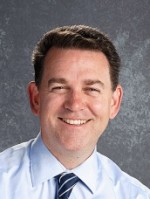If Woody Woodford sounds a little bit jaded, it’s because he has seen this scenario before.
Every year or two, Congress devises a new way to scrape up money for his Kellogg School District and other rural schools. In 2013, Congress tucked the money into a bill to keep the nation’s helium reserve in federal hands. In 2015, a larger Medicare measure provided a politically expedient vehicle.
It’s one constant. And here’s another. Every time, Kellogg seems to get a little less money from Uncle Sam — putting more pressure on local taxpayers in North Idaho’s struggling Silver Valley. Kellogg received $406,000 from the feds in 2015-16. A decade ago, the payment peaked at $725,000.
But now, superintendents such as Woodford are wondering if they will get any money at all. The federal Secure Rural Schools program, designed to boost K-12 budgets in America’s timber country, could be felled. The feds cut off program funding on Sept. 30, 2015.
Targeted toward timber country
School districts such as Kellogg derive little revenue from the federal forest lands that surround them. The lands are tax-exempt, and logging receipts have been in decline for years. In 2000, Sens. Larry Craig, R-Idaho, and Ron Wyden, D-Ore., convinced their colleagues to pass a funding substitute.
The Secure Rural Schools program provided nearly $6.7 million to Idaho schools in 2015-16. But since the program is supposed to provide targeted funding for timber country, the payments vary as widely as the Idaho landscape.
- Nearly one-sixth of the money goes to a single district — Idaho County’s sprawling Mountain View district, with an enrollment of about 1,200 students. Mountain View received $1,042,000 in 2015-16.
- For some of Idaho’s smallest and most remote districts, Secure Rural Schools makes up a big piece of the budget. In Eastern Idaho’s sparsely populated Clark County, a $201,000 payment translates to roughly $1,400 per student.
- Predictably enough, the Secure Rural Schools program is a non-factor in many urban districts. The Boise district received about 93 cents per pupil in 2015-16. The West Ada district received 2 cents per student, and the Nampa district was among 21 districts receiving no Secure Rural Schools funding.
The Secure Rural Schools moniker is a bit of a misnomer. The bulk of the federal money actually goes to counties, not schools. That’s still important, Woodford said; Shoshone County puts some of its money into road maintenance, which in turn reduces wear and tear on the school bus fleet. “We have some real challenging roads, particularly in the winter,” he said.
Stopgap funding
If the Secure Rural Schools funding goes away for good, Donnelly Elementary School might have to make do with its 1950s-era gymnasium.

The gym has a capacity of 170, which isn’t enough to accommodate students and staff for an assembly. Without help from the feds, the district won’t have cash on hand to build a replacement. The district will have to wait, or ask voters to approve a property tax levy for building projects, McCall-Donnelly School District Superintendent Jim Foudy said.

The $398,000 Secure Rural Schools payment accounts for only about 3 percent of McCall-Donnelly’s budget.
But this district, like others, has gotten into the habit of using the feds’ money judiciously. Given the question marks surrounding the program, school officials have been reluctant to rely on federal dollars to cover ongoing costs — particularly salaries and benefits.
Idaho City’s Basin School District received $126,000 in 2015-16, and used some of the money to sustain a pre-kindergarten program. (Idaho is one of only a handful of states that do not fund pre-K, and districts such as Basin can choose to offer a program.)
But like McCall-Donnelly, districts such as Cottonwood and Kellogg have used their share of federal dollars for building projects.
By using Secure Rural Schools dollars for building repairs, the Kellogg district has managed to get by without a plant facilities levy. That takes some pressure off of property owners in a county with a 6.9 percent unemployment rate — the second-highest rate in the state.
But Woodford is realistic. Kellogg has $10 million in building needs, according to a 2013 study, and $400,000 or so a year only goes so far.
“It’s getting tougher and tougher to afford baling wire, duct tape and Band-Aids,” he said.
The uncertain future
It isn’t every day that Idaho Republican Sens. Mike Crapo and Jim Risch find themselves on the same side with Vermont Democratic Sen. Bernie Sanders.
Sept. 16 was one such day.
The three senators joined 26 of their colleagues signing a letter to Senate leadership, urging continued Secure Rural Schools funding. Less than a week later, 52 House members followed suit with a similar bipartisan appeal. Idaho Republicans Mike Simpson and Raul Labrador were among the supporters.
Both letters seem to go out of their way to challenge conventional wisdom: the notion that Secure Rural Schools is exclusively a Western program. Both letters stress the fact that the program affects 9 million students in 41 states.
Even if supporters succeed in elevating the national profile of this debate, this doesn’t guarantee any long-term security for the Secure Rural Schools program — or a similar program, Payment in Lieu of Taxes, which supports counties with small tax bases.
This week, Simpson seemed resigned to a perennial funding fight.
“While I would prefer a long-term solution to both PILT and SRS, I support immediate and necessary funding for both programs,” said Simpson, who chairs House appropriations subcommittee.
Which means Secure Rural Schools supporters could be scrambling to find another impromptu funding solution — just as they did in 2015, when Simpson and Labrador argued publicly, and bitterly, over attaching the schools’ line item to a Medicare bill.
Meanwhile, both Woodford and Foudy have doubts about Secure Rural Schools’ future — even though they’ve heard rumblings before about the program’s pending demise.
“For some reason, I believe it this time,” Foudy said.
